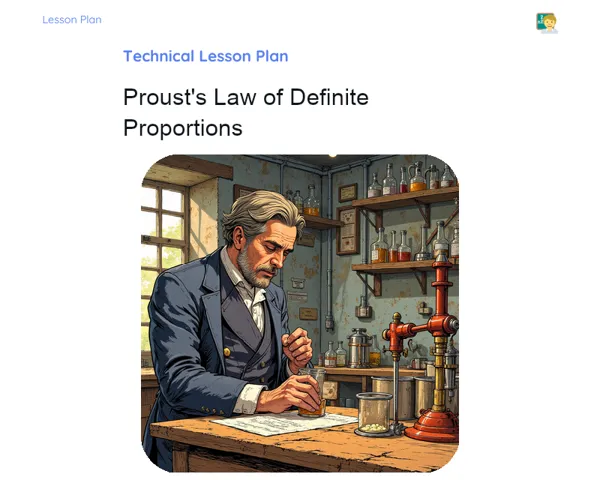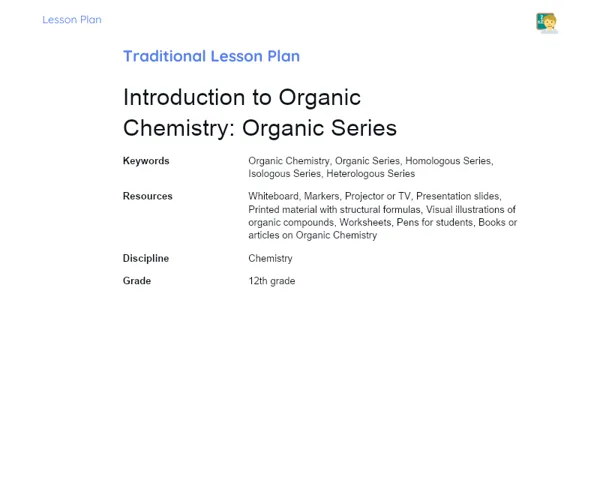Lesson Plan | Active Methodology | Nuclear Reaction: Introduction
| Keywords | Nuclear Reactions, Alpha, Beta, and Gamma Particles, Nuclear Fission and Fusion, Hands-on Activities, Scientific Debate, Element Building Game, Investigation of Abandoned Plant, Scientific Communication, Teamwork, Critical Thinking, Real-World Applications |
| Necessary Materials | Radiation measurement data, Plant blueprints, Particle cards (alpha, beta, gamma), Proton and neutron cards, Supporting materials with arguments, Projector for presentations, Space for group discussions, Time for group preparation and presentations |
Premises: This Active Lesson Plan assumes: a 100-minute class duration, prior student study both with the Book and the beginning of Project development, and that only one activity (among the three suggested) will be chosen to be carried out during the class, as each activity is designed to take up a large part of the available time.
Objective
Duration: (5 - 10 minutes)
Setting clear objectives is essential to provide students with a roadmap of what they should understand and be able to apply by the end of the lesson. By specifying objectives, the teacher helps students focus on key points from previous studies, ensuring a strong foundation for hands-on activities where applying concepts will be paramount. This also helps align expectations and ensures everyone is working towards the same learning goals.
Objective Utama:
1. Help students deepen their understanding of nuclear reaction principles by recognizing their characteristics and fundamental emissions, such as alpha, beta, and gamma particles.
2. Enable students to clearly distinguish between nuclear fission and fusion by examining their processes, applications, and implications.
Objective Tambahan:
- Spark students' curiosity about the role of nuclear reactions in daily life and contemporary science.
Introduction
Duration: (15 - 20 minutes)
This introduction aims to engage students with the topic, employing problem-solving situations that provoke critical thinking and utilize prior knowledge. By illustrating the significance of nuclear reactions through relatable real-world and historical contexts, students can appreciate both the practical and theoretical importance of the subject, thereby boosting their interest and motivation for learning.
Problem-Based Situation
1. Imagine a nuclear power plant operating smoothly when suddenly an alarming surge in gamma radiation is detected. What could be causing this spike, and what could the potential repercussions be?
2. Think about a scenario where scientists are exploring innovative cancer treatment methods using alpha radiation. What hurdles might they face with this type of radiation, and how can knowledge of nuclear reactions assist in navigating these challenges?
Contextualization
Nuclear reactions are not merely theoretical subjects; they are crucial to our society and scientific progress. For instance, nuclear energy is harnessed to generate electricity in many regions across the globe and is also pivotal in nuclear medicine, utilizing radioisotopes for diagnostics and treatment. Additionally, insights from nuclear reactions have enhanced dating techniques and tracking technologies in geology and biology. The use of radiation for food preservation or the discovery of transuranic elements during World War II further underscores the relevance of nuclear studies.
Development
Duration: (75 - 85 minutes)
The purpose of this development stage is to offer students opportunities to practically and interactively engage with the concepts of nuclear reactions and their implications. By collaborating in groups, participants reinforce their understanding while honing critical thinking, communication, and teamwork skills. Each activity is designed to be engaging and educational, allowing students to explore the topic thoroughly through real or simulated situations, debates, and games in an enjoyable and effective manner.
Activity Suggestions
It is recommended that only one of the suggested activities be carried out
Activity 1 - Nuclear Investigators: The Mystery of the Abandoned Plant
> Duration: (60 - 70 minutes)
- Objective: Apply knowledge about radiation types and nuclear reactions to address practical problems while developing teamwork and communication skills.
- Description: Students will be grouped into small teams of up to 5 members, each receiving a hypothetical scenario: they are nuclear scientists called to inspect an abandoned power plant suspected of a radiation leak. Their task is to identify the radiation types present, determine their sources, and propose strategies to manage the risks. Students must draw from their knowledge of nuclear reactions, especially alpha, beta, and gamma emissions, analyze the data provided, and prepare a presentation explaining their findings.
- Instructions:
-
Group the class into teams of up to 5 students.
-
Distribute scenarios and supporting materials that include radiation measurement data and blueprints of the plant.
-
Allocate 10 minutes for reading and discussion within groups.
-
Each group must prepare a 15-minute presentation, covering potential nuclear reactions occurring in the plant along with recommended safety measures.
-
Organize a Q&A session after each presentation.
Activity 2 - Fusion or Fission: A Scientific Debate
> Duration: (60 - 70 minutes)
- Objective: Enhance argumentation skills and deepen understanding of the applications and implications of nuclear fusion and fission.
- Description: In this activity, students will engage in a simulated debate where one half of the class advocates for expanding nuclear energy through fusion, while the other half supports fission. Each group will receive both theoretical and practical materials to bolster their arguments, and the debate will be structured in rounds with opportunities for rebuttals.
- Instructions:
-
Divide the class into two groups, one for fusion and the other for fission.
-
Provide material containing arguments for and against each technology.
-
Each group will have 20 minutes to discuss internally and organize their arguments.
-
Start the debate with 5-minute presentations, followed by 3-minute rebuttals from each side.
-
Conclude with a vote to see which group made the more compelling case.
Activity 3 - Element Builders: The Particle Game
> Duration: (60 - 70 minutes)
- Objective: Facilitate a tangible understanding of nuclear reactions and their fundamental principles through a collaborative and engaging manner.
- Description: This fun activity immerses students in a game designed to create elements. Each group will receive 'particle cards' (alpha, beta, gamma) and 'proton and neutron cards'. The goal is to construct elements while simulating nuclear reactions and observing changes. Challenges within the game will require certain conditions (like energy or mass) to be fulfilled for reactions to occur.
- Instructions:
-
Form teams of up to 5 students and distribute the necessary game materials.
-
Explain the basic rules and how cards can be combined to create elements.
-
Give students 10 minutes to familiarize themselves with the game before diving in.
-
Start the game, monitoring the combinations and discussions taking place within groups.
-
Conclude with a plenary discussion on the strategies used and concepts witnessed about nuclear reactions.
Feedback
Duration: (15 - 20 minutes)
The objective of this feedback stage is to allow students to articulate and share their learnings from practical activities. This not only reinforces their knowledge but also provides the teacher with insights into students' understanding and helps clear any lingering doubts. Group discussions also enhance communication and collaboration skills essential for scientific learning.
Group Discussion
Kick off the group discussion with a brief overview of the activities completed, reiterating that the aim is to exchange learning experiences and insights among groups. Encourage students to reflect on how they applied and adapted their prior knowledge during the activities. Ask what surprises they encountered and what challenges they faced. This phase is vital for solidifying learning while enabling students to express their understanding.
Key Questions
1. What were the significant challenges faced while applying your knowledge of nuclear reactions during the activities?
2. How did the practical activities aid in clarifying theoretical concepts related to nuclear reactions?
3. In what ways can the understanding of nuclear reactions be beneficial in your current or future life situations?
Conclusion
Duration: (5 - 10 minutes)
The conclusion serves to consolidate learning, ensuring that students are able to synthesize the information acquired and appreciate the practical and theoretical significance of the topic. This final moment also allows the teacher to evaluate if the learning objectives were successfully met and to reinforce the connection between theory and practice, as well as emphasize the relevance of nuclear reactions to daily life and current scientific endeavors.
Summary
To wrap things up, it's important to summarize the key concepts related to nuclear reactions covered in the lesson. Over the course of the lesson, students have explored alpha, beta, and gamma emissions, identified the products of different nuclear reactions, and clearly distinguished between fission and fusion.
Theory Connection
Today's lesson was designed to integrate theory and practice effectively. Through investigation activities, debates, and games, students had the chance to apply their theoretical knowledge in practical and simulated contexts, reinforcing their understanding while showcasing the relevance of nuclear reactions in real life.
Closing
The significance of nuclear reactions extends beyond academic discussions to various technological and scientific realms, including energy generation, medicine, and food processing. Comprehending these processes is pivotal for developing safer and more effective technologies and furthering scientific knowledge.



